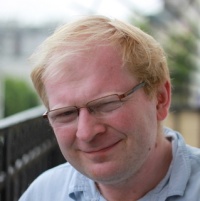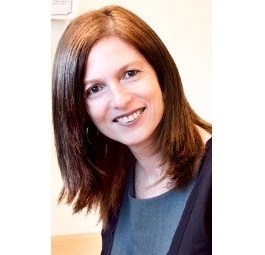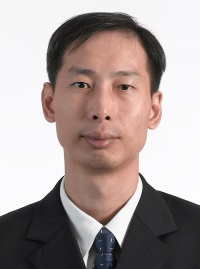





The CGI'15 organisation team would like to thank all the participants who have made CGI'15 a big success! We have received 234 submissions from over 30 countries. 26 of these papers have been selected for publication in the special issue of the Visual Computer, 9 others for publication in a regular issue of the Visual Computer. 19 short paper and 7 posters have also been acepted for presentation during the conference.
The CGI Career Award has been given to Daniel Thalmann (Nanyang Technological University) in recognition and appreciation of the recipient's devoted time and effort to computer graphics and contributions to the CGI conferences.

The first Best Paper Award have been given to Conrado Jr. Ruiz, Sang N. Le and Kok-Lim Low for their paper "Generating Animated Paper Pop-ups from the Motion of Articulated Characters"
The second Best Paper Award have been given to Siyuan Qiao, Xiaoxin Fang, Bin Sheng, Wen Wu and Enhua Wu for their paper "Structure-aware QR Code abstraction"

Computer Graphics International is one of the oldest and true international conference in Computer Graphics and one of the five most important ones worldwide. It is an essential yearly meeting where academics present their latest models and technologies, and explore new trends and ideas. In previous years, it had been held in many different places worldwide - UK, Germany, Australia, and many other nations in Europe, Asia, and America.
Computer Graphics International (CGI) 2015, the 32nd annual conference will take place on June 24-26, 2015 in Strasbourg, France. The city of Strasbourg is located in the center of Europe, at the crossroads of France, Germany and Switzerland. The conference will be organized by the Computer Graphics and Geometry Group of ICube Laboratory (CNRS/Université de Strasbourg).
The selected 35 best full papers will appear as journal papers in the special issue of the leading international journal The Visual Computer (Impact Factor 1.073) by Springer Verlag publisher, and will be presented orally at the conference. The scientific program of the conference will also include short papers and posters. Authors of accepted short papers will be invited to submit an extended version of their work to The Visual Computer; these papers will follow a fast track review process.
A Best Paper Award will be given at the end of the conference. The selection criteria will be based on the technical quality of the paper and clarity of the oral presentation. A CGI Career Award will be also given in recognition and appreciation of the recipient's devoted time and effort to computer graphics and contributions to the CGI conferences.
Big Data and the Pursuit of Visual Realism
Over the past decade, the Internet has developed into a gargantuan depository of visual data (photos, videos, webcams, 3D models, etc) captured by people (and machines) all over the globe. A pressing research question is how this visual data could be useful in graphics as a way of “crowd-sourcing” visual realism? In this talk, I will give an overview of some of the work on using large online image collections to transfer visual appearance as a way of synthesizing novel visual content. Using graphics as a tool for exploring and visualizing large datasets will also be discussed.

Alexei (Alyosha) Efros joined UC Berkeley in 2013 as associate professor of Electrical Engineering and Computer Science. Prior to that, he was nine years on the faculty of Carnegie Mellon University, and has also been affiliated with École Normale Supérieure/INRIA and University of Oxford. His research is in the area of computer vision and computer graphics, especially at the intersection of the two. He is particularly interested in using data-driven techniques to tackle problems which are very hard to model parametrically but where large quantities of data are readily available. Alyosha received his PhD in 2003 from UC Berkeley. He is a recipient of CVPR Best Paper Award (2006), NSF CAREER award (2006), Sloan Fellowship (2008), Guggenheim Fellowship (2008), Okawa Grant (2008), Finmeccanica Career Development Chair (2010), SIGGRAPH Significant New Researcher Award (2010), ECCV Best Paper Honorable Mention (2010), and the Helmholtz Test-of-Time Prize (2013).
Past Forward: When Computer Graphics and Archaeology meet
Shape analysis has become a lively topic of research in computer graphics. It aims at developing algorithms and technologies for “understanding” shapes. In archaeology, many of the tasks are inherently shape analysis tasks, from documentation, through search, to restoration. However, these are still done manually, involving significant labor and expertise. In this talk, I will give an overview of our attempts to bring these fields together. Archaeology is an interesting domain not only because cultural heritage has been acknowledged worldwide as an important goal, but also because the archaeological domain exposes the limits of current computer graphics techniques. Scanned archaeological artifacts and not clean and nicely-behaved geometries; rather they are broken, eroded, noisy, and ultimately challenging to algorithms that visualize, analyze, or restore.

Ayellet Tal received the BSc degree (Summa cum Laude) in mathematics and computer science from Tel-Aviv University, and the PhD degree in computer science from Princeton University. She is a professor in the Department of Electrical Engineering at the Technion and the founder of the Laboratory of Computer Graphics and Multimedia. She served as the program chair of the ACM Symposium on Virtual Reality, Software, and Technology (VRST 2006) and as the chair of Shape Modeling International (SMI 2011). She has also served in the program committees of all the leading conferences in Computer Graphics. She is an associate editor of IEEE Transactions on Visualization and Computer Graphics (TVCG) and of Computers & Graphics and was on the editorial board of Computer Graphics Forum (CGF).
Motion Capture Processing: Error Recovery, Compression and Application
Motion capture (mocap) is the process of recording the motion of human. In film production and video game industries, it refers to recording motion of human actors, and using that information to animate character models in 2D or 3D animation. As number of sensors increase, large number of data need to be stored and transmitted. Reducing data size by compression is always an important topic. Besides, the depth map camera which can be used to generate mocap data becomes more and more popular nowaday, it reduces the cost to develop new mocap application. This talk will (i) simply introduce motion capture , (ii) data recovery due to transmission and occulsion problem, (iii) compression techniques to reduce the data size, and (iv) application on fall detection.

Lap-Pui Chau received the B. Eng degree in Electronic Engineering from Oxford Brookes University, and the Ph.D. degree in Electronic Engineering from The Hong Kong Polytechnic University, in 1992 and 1997, respectively.
In 1996, he joined Tritech Microelectronics as a senior engineer. Since 1997, he joined Nanyang Technological University. His research interests include fast signal processing algorithms, video transmission, Mocap processing and human motion analysis.
He was the chair of Technical Committee on Circuits & Systems for Communications (TC-CASC) of IEEE Circuits and Systems Society from 2010 to 2012. Since 2004, he have served as an associate editor for IEEE Transactions on Multimedia, IEEE Signal Processing Letters, IEEE Transactions on Circuits and Systems for Video Technology and IEEE Transactions on Broadcasting. Besides, he is IEEE Distinguished Lecturer for 2009-2014.